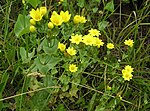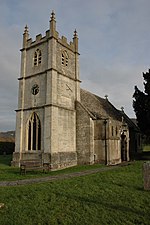Workmans Wood, Sheepscombe
CotswoldsForests and woodlands of GloucestershireGloucestershire geography stubsNature reserves in GloucestershirePainswick ... and 2 more
Sites of Special Scientific Interest in GloucestershireUse British English from July 2014

Workmans Wood (grid reference SO900109) is a wood just to the east of the village of Sheepscombe, in the Cotswolds, Gloucestershire. It is a biological Site of Special Scientific Interest being part of the Cotswold Commons And Beechwoods SSSI. The Wood is part of a designated national nature reserve (NNR).
Excerpt from the Wikipedia article Workmans Wood, Sheepscombe (License: CC BY-SA 3.0, Authors, Images).Workmans Wood, Sheepscombe
B4070,
Geographical coordinates (GPS) Address Nearby Places Show on map
Geographical coordinates (GPS)
| Latitude | Longitude |
|---|---|
| N 51.79666 ° | E -2.14641 ° |
Address
B4070
GL6 7EU
England, United Kingdom
Open on Google Maps









